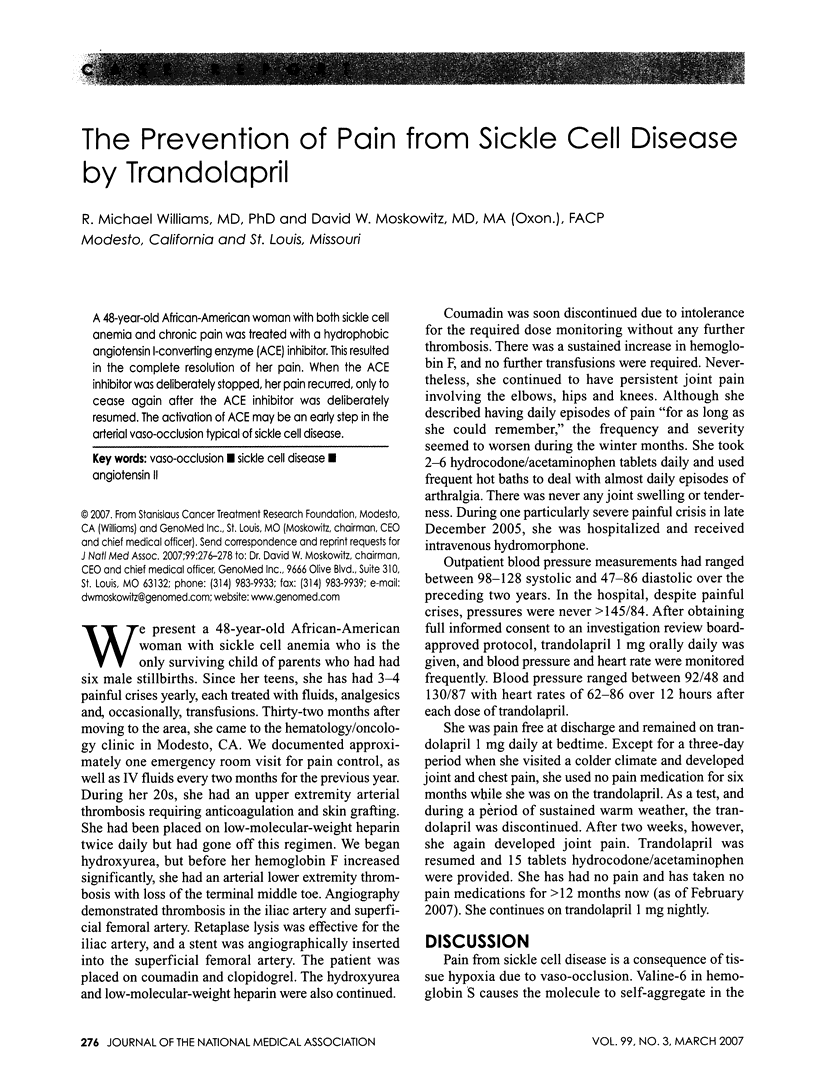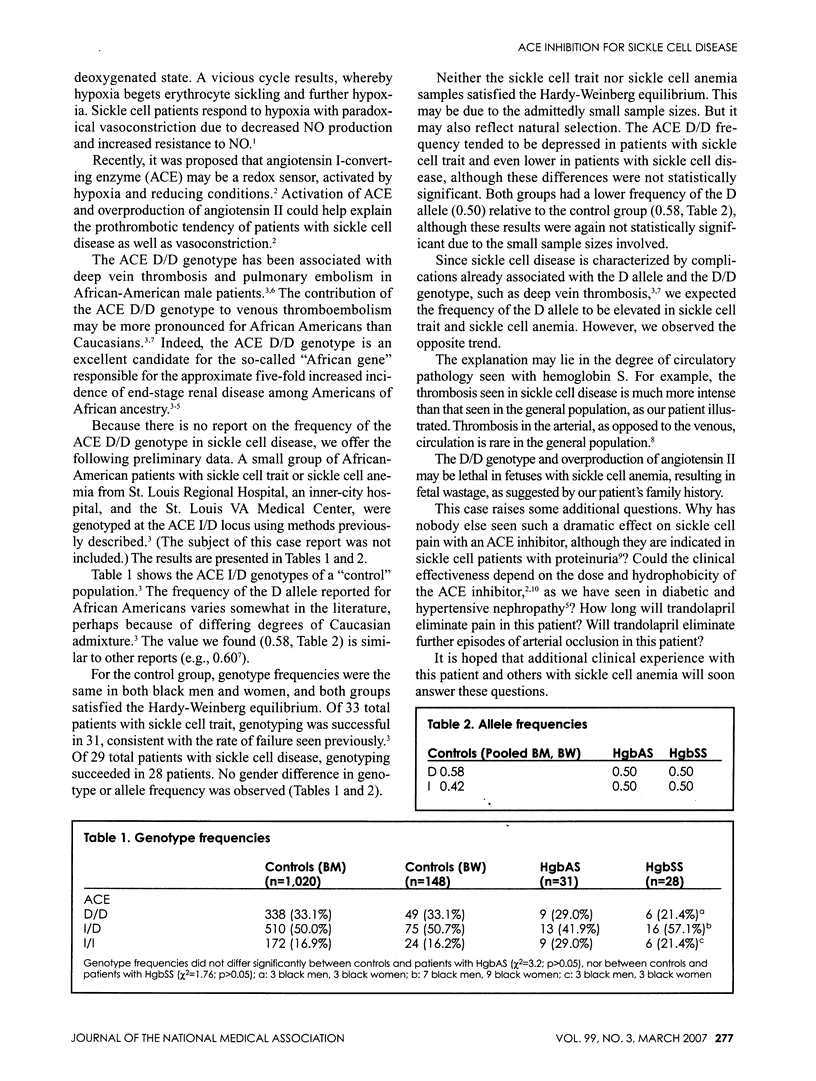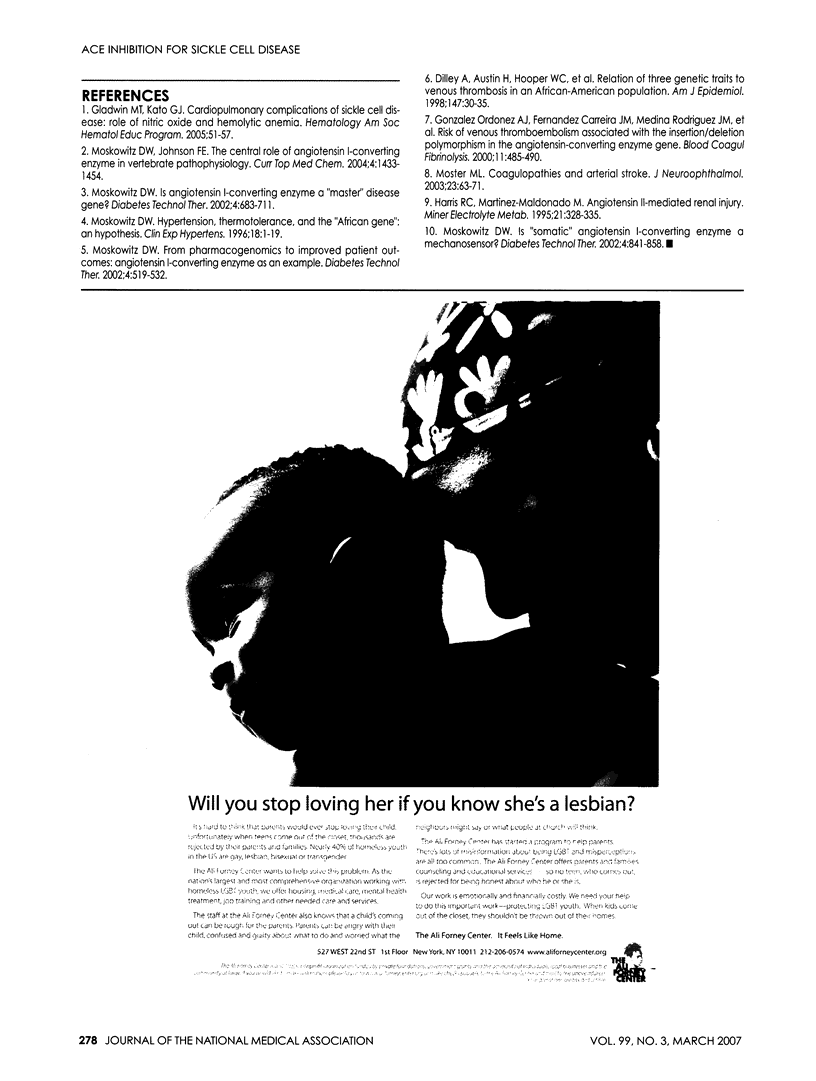Abstract
A 48-year-old African-American woman with both sickle cell anemia and chronic pain was treated with a hydrophobic angiotensin I-converting enzyme (ACE) inhibitor. This resulted in the complete resolution of her pain. When the ACE inhibitor was deliberately stopped, her pain recurred, only to cease again after the ACE inhibitor was deliberately resumed. The activation of ACE may be an early step in the arterial vaso-occlusion typical of sickle cell disease.
Full text
PDF


Selected References
These references are in PubMed. This may not be the complete list of references from this article.
- Dilley A., Austin H., Hooper W. C., Lally C., Ribeiro M. J., Wenger N. K., Silva V., Rawlins P., Evatt B. Relation of three genetic traits to venous thrombosis in an African-American population. Am J Epidemiol. 1998 Jan 1;147(1):30–35. doi: 10.1093/oxfordjournals.aje.a009363. [DOI] [PubMed] [Google Scholar]
- Gladwin Mark T., Kato Gregory J. Cardiopulmonary complications of sickle cell disease: role of nitric oxide and hemolytic anemia. Hematology Am Soc Hematol Educ Program. 2005:51–57. doi: 10.1182/asheducation-2005.1.51. [DOI] [PMC free article] [PubMed] [Google Scholar]
- González Ordóez A. J., Fernández Carreira J. M., Medina Rodríguez J. M., Martín Sánchez L., Alvarez Díaz R., Alvarez Martinez M. V., Coto Garcia E. Risk of venous thromboembolism associated with the insertion/deletion polymorphism in the angiotensin-converting enzyme gene. Blood Coagul Fibrinolysis. 2000 Jul;11(5):485–490. doi: 10.1097/00001721-200007000-00011. [DOI] [PubMed] [Google Scholar]
- Harris R. C., Martinez-Maldonado M. Angiotensin II-mediated renal injury. Miner Electrolyte Metab. 1995;21(4-5):328–335. [PubMed] [Google Scholar]
- Moskowitz D. W. Hypertension, thermotolerance, and the "African gene": an hypothesis. Clin Exp Hypertens. 1996 Jan;18(1):1–19. doi: 10.3109/10641969609082603. [DOI] [PubMed] [Google Scholar]
- Moskowitz David W. From pharmacogenomics to improved patient outcomes: angiotensin I-converting enzyme as an example. Diabetes Technol Ther. 2002;4(4):519–532. doi: 10.1089/152091502760306616. [DOI] [PubMed] [Google Scholar]
- Moskowitz David W. Is "somatic" angiotensin I-converting enzyme a mechanosensor? Diabetes Technol Ther. 2002;4(6):841–858. doi: 10.1089/152091502321118847. [DOI] [PubMed] [Google Scholar]
- Moskowitz David W. Is angiotensin I-converting enzyme a "master" disease gene? Diabetes Technol Ther. 2002;4(5):683–711. doi: 10.1089/152091502320798321. [DOI] [PubMed] [Google Scholar]
- Moskowitz David W., Johnson Frank E. The central role of angiotensin I-converting enzyme in vertebrate pathophysiology. Curr Top Med Chem. 2004;4(13):1433–1454. doi: 10.2174/1568026043387818. [DOI] [PubMed] [Google Scholar]
- Moster Mark L. Coagulopathies and arterial stroke. J Neuroophthalmol. 2003 Mar;23(1):63–71. doi: 10.1097/00041327-200303000-00012. [DOI] [PubMed] [Google Scholar]


